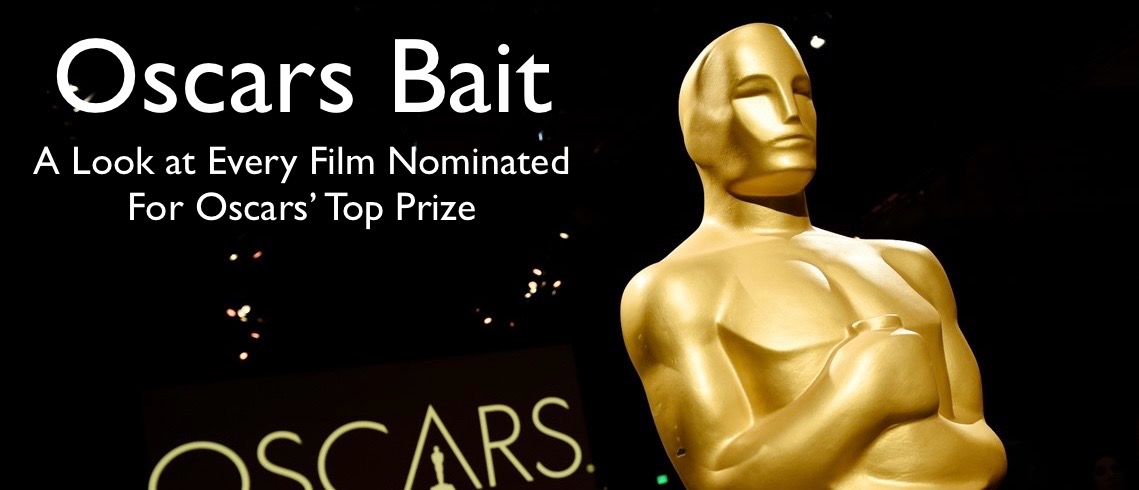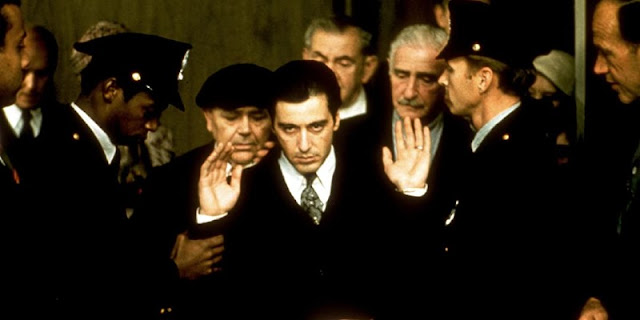The film spans two generations in two intermixed stories. The first of these is Michael’s who, at the end of the first movie, had secured his power by assassinating the heads of the five families in New York City. Seven years have passed and he is looking to move the family out west, securing gambling and casino licensing in Nevada. There is an attempted assassination on his life that leaves him shaken and unsure who is behind it and who in the family could have opened the doors to allow it to happen. His two primary suspects are Frank Pentangeli (Michael V. Gazzo) and Hyman Roth (Lee Strasberg). Frank is a Corleone capo who’s frustrated with Michael over his refusal to defend his Bronx territory against the Rosato Brothers who work for Hyman Roth, long standing business partner to the family. Michael visits both men separately, telling them he knows the other is the guilty one in an attempt to ferret out which one is the real guilty party. When a faked murder attempt on Pentangeli’s life occurs, arranged by Roth to make it look like Michael was behind it, Pentangeli turns states evidence against him offering up to the feds direct knowledge he has that could land Michael in jail.
The second story is that of Vito Corleone, played originally by Marlon Brando in The Godfather. This prequel within the sequel tells the story of how the young child Vito is smuggled out of Corleone, Sicily when his whole family is killed by a mafia boss after his father insults the man. The young child ends up in New York City through immigration, grows up, marries and struggles to support his new family. When he does a favor for one of his neighbors by hiding a bag of guns for him, it introduces him to a whole new world where illicit activities can elevate his family out of the dredges of poverty. However, a local extortionist, Don Fanucci, hears of their successes and demands a hefty cut of their profits. Vito offers his partners a way to deal with this without having to give up so large a share. He uses his skills as a negotiator to convince Fanucci to accept much less for payment, then, later, executes the man in his apartment, permanently eliminating the problem. Vito gains a reputation and respect amongst the community by helping the locals in exchange for “favors,” cementing his legacy and power.
There is a stark contrast between the leadership styles of Vito and Michael and by intermixing the two stories like this it really draws attention to that. In The Godfather, Vito guided and advised Michael, teaching him the business as well as how to protect himself and root out traitors. Michael seems to have taken this advice and gone too far to the point that he trusts no one. He closed out the first film by lying to his wife Kay (Diane Keaton) about ordering the murder of his brother-in-law and opens this film with the aftermath of that murder, his sister Connie’s (Talia Shire) self destructive behavior. Ever since she lost her husband she has neglected her kids and jumped from man to man, burning through money. She comes to Michael intent on securing more cash so she can disappear again and remarry, but he refuses, telling her to ditch the man instead. Michael’s relationship to his older brother Fredo (John Cazale) is equally strained. Michael treats his brother as a glorified errand boy, something that Fredo resents as he sees himself stepped over for head of the family. This jealousy, coupled with Fredo’s mental weaknesses, allows the man to be easily manipulated by Michael’s enemies.
The modern day storyline is cold, as cold as Michael Corleone himself. Michael’s idea of protecting himself is to cut everyone off and kill those who potentially threaten him. This self isolation will alienate him from everyone around including his long suffering wife who will finally be driven to extremes to hurt him and get away from his control. Their final blowout is one of the most powerful and horrific moments in the entire trilogy and cements just how much of a monster he has become since we first saw him in his military uniform attending his sister’s wedding in the opening of the first film. He was in love with her then but by the end of their blowout here that love is gone and her actions have secured an end to that relationship. He will shut the door in her face, much like he did at the end of The Godfather, but this time instead of separating her from his business he is separating her from her children.
Compare this to Vito as he raises his three children in love and warmth. We see each of the three kids during these flashbacks and these moments are made all the more poignant knowing exactly where they will end up. Vito, like Michael later, is a monster of a man, willing to kill if necessary. But Vito was also a caring man who looked out for the people around him and would never intentionally harm his family, even though the business he was getting into would ultimately do just that. Robert DeNiro does an incredible job reintroducing us to this character and showing us a new side to Vito, expanding on what Brando gave us last time and is so good at it that we almost forget about Brando’s portrayal. Almost. Marlon Brando famously refused to appear in Part II for even a cameo appearance in the epilogue scene and that ended up being the right choice. It would have distracted from DeNiro’s presence and invited more comparisons than were already going to happen. That final scene builds up the anticipation and the nostalgia of seeing so many characters that have died throughout the course of the two films but stops just short of bringing Brando, himself, back. Instead, it ends on Michael sitting at a table alone, prophesying of the world he will have created for himself.
Francis Ford Coppola accomplished the impossible when he made The Godfather, Part II. He took an already epic story and expanded on it, crafting a sequel that meets, and in many ways, exceeds the original. At the time it was considered folly to try and add on to what was already considered one of the greatest films of all time. It shouldn’t have worked, yet Coppola made it work. It’s a different film from the original and the tone is much more cold, but that tone serves this story well and is softened by the contrasting storylines. Seeing the young Vito grow into the man we knew from The Godfather and comparing that to Michael’s growth and self destruction is an impressive feat few filmmakers could accomplish. As a pair, The Godfather and its sequel are about as good of a duo of films as can ever be made and there will always be that debate over which of the two is better. For me it’s this one. The richness of the two intermixed stories just barely nudges out the first film as the better if the two.
Academy Award Nominations:
Best Picture: Francis Ford Coppola, Gray Frederickson and Fred Roos (won)
Best Director: Francis Ford Coppola (won)
Best Actor: Al Pacino
Best Supporting Actor: Robert De Niro (won)
Best Supporting Actor: Michael V. Gazzo
Best Supporting Actor: Lee Strasberg
Best Supporting Actress: Talia Shire
Best Adapted Screenplay: Francis Ford Coppola and Mario Puzo (won)
Best Art Direction: Dean Tavoularis, Angelo P. Graham and George R. Nelson (won)
Best Costume Design: Theodora Van Runkle
Best Original Dramatic Score: Nino Rota and Carmine Coppola (won)
____________________________________________________
Release Date: December 20, 1974
Running Time: 202 Minutes
Rated R
Starring: Al Pacino, Robert Duvall, Diane Keaton, Robert De Niro, Talia Shire, Morgana King, John Cazale, Mariana Hill, Lee Strasberg and Michael V. Gazzo
Directed By: Francis Ford Coppola








Comments
Post a Comment